Austria. The Art of Discovery, a competition organised by Studio 1854 in collaboration with the Austrian National Tourist Office, gave one photographer the opportunity to explore Austria on an exclusive commission. Catherine Hyland was selected as the winner and travelled across the country to create a body of work responding to the people and places she encountered.
Here, in the first of two editorials, we present the work she produced while exploring the Bregenzerwald, in Vorarlberg. Read about the second half of her trip exploring Linz, in Upper Austria, here. Selects from Hyland’s project were also on show at Photo London 2018, as part of the 2018 Pavillion Commission Austria. The Art of Discovery.
Catherine Hyland is standing atop the Baumgarten mountain station, 2000 meters up. From here, a panoramic view of the Bregenzerwald, a region in the westernmost Austrian state of Vorarlberg, stretches out beneath her. To the north and east, the landscape is softer; the area’s 22 villages sit amongst verdant valleys and undulating hills. To the south and west, the view intensifies, with stretches of dense forest slowly giving way to soaring, jagged peaks flecked in snow.
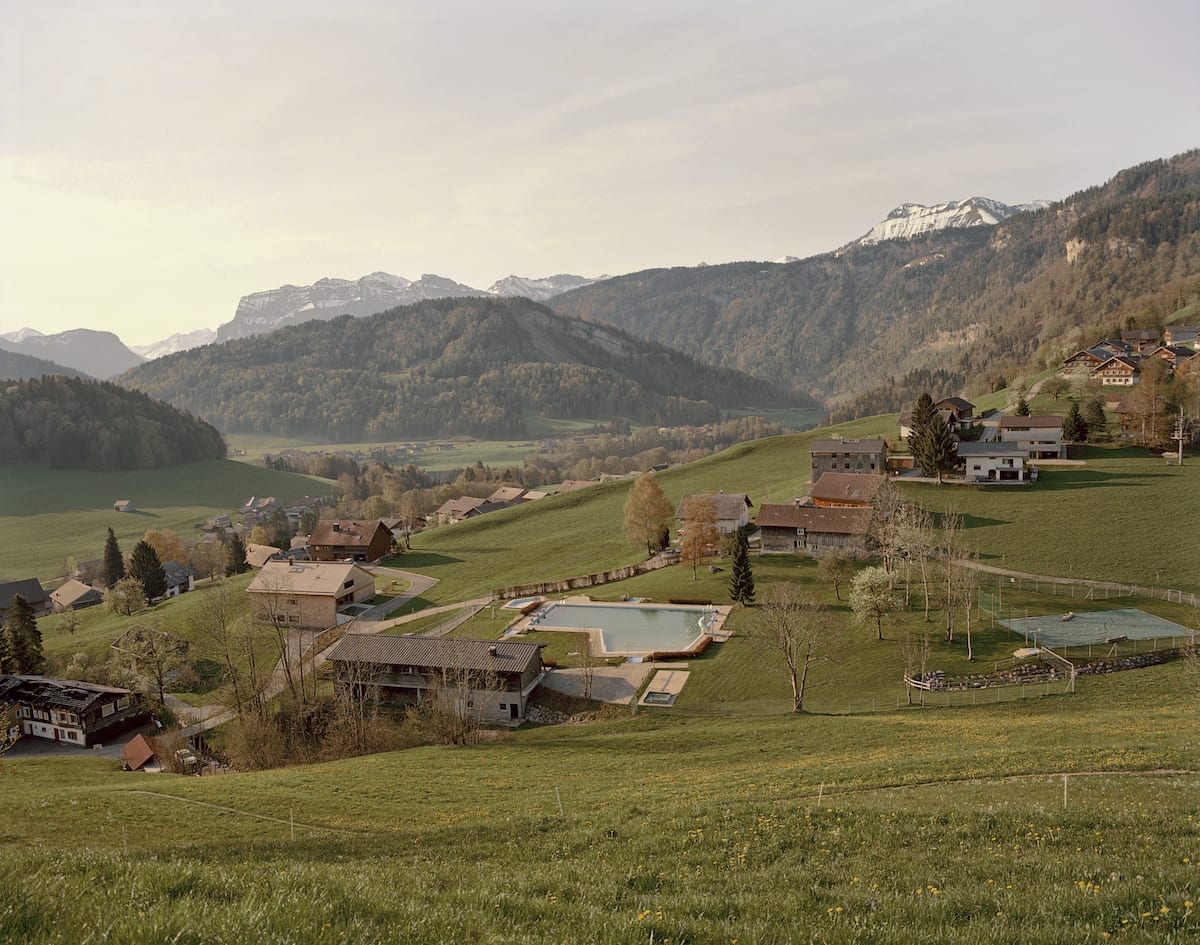
Hyland is no stranger to vast landscapes. Her ongoing project Universal Experience captures immense vistas in rural China and Mongolia. In each still, Hyland captures details in these arid, sprawling landscapes that highlight humanity’s ongoing attempts to tame and transform them. Whether it is a nondescript, red picket fence demarcating a viewing platform, or a monumental statue of a historical figure, these interventions illustrate her understanding of landscape as, primarily, a cultural construct.
Before arriving in the Bregenzerwald for the Austria. The Art of Discovery commission, Hyland was already intrigued by early tourists’ descriptions of the area as an “enclosed park”. The network of roads weaving their way through the picturesque villages below present a modern-day enclosure for Hyland, who actively avoids premeditated experiences of the places she photographs. Surveying the region from above allows her to escape any restrictions on her understanding of the landscape below.
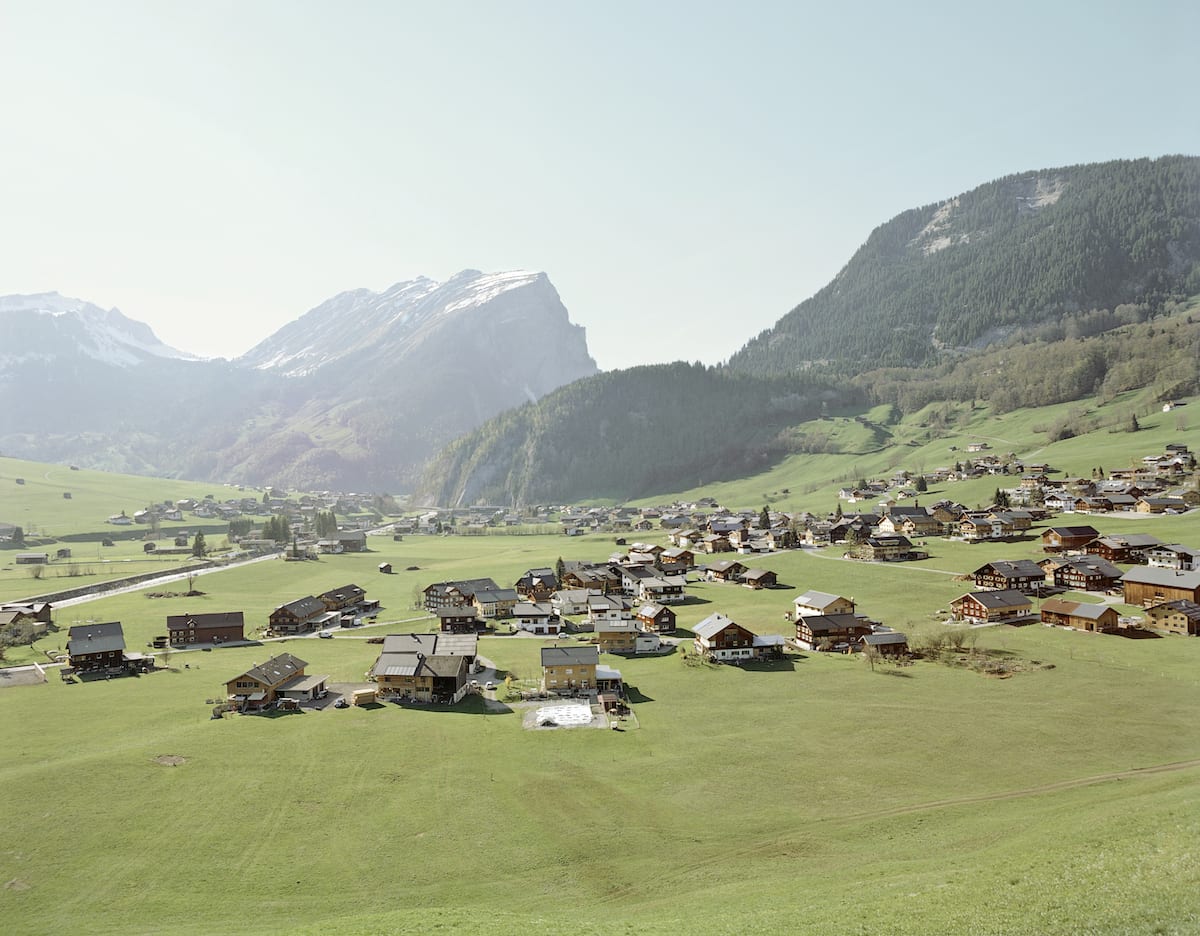
As with Universal Experience, it is the tension between nature and humanity visible throughout the Bregenzerwald that captures her attention. “What always interests me about landscapes is the dynamic of chaos versus control,” she explains, “so the things that are formed naturally, free from human intervention, in comparison to the things that are controlled by people.” From our elevated perspective, this dynamic is encapsulated in the contrast between the manicured villages set against a backdrop of rugged mountains.
Days before, at the foot of the Bregenzerwald Valley, Hyland adopts a different approach, driving relentlessly from our base in the small town of Bezau in order to see as much of the area as possible. “The way I work is to just keep exploring – looking and looking and looking,” she says as we leave behind the scenic landscapes surrounding the area’s settlements. Sprawling green meadows and gently sloping hills are replaced by impressive rock formations, studded with towering pines as the road climbs upwards towards the alpine village of Warth.
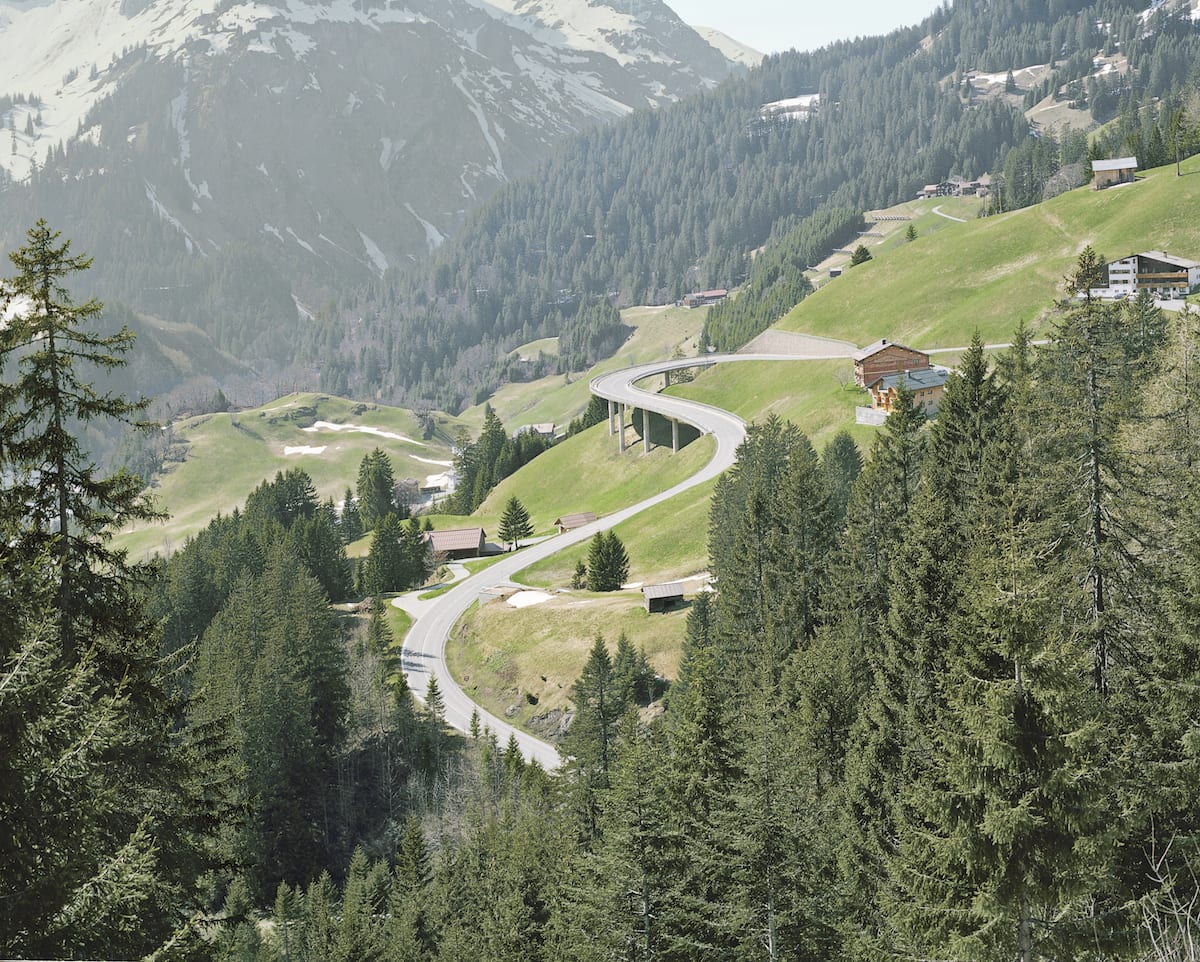
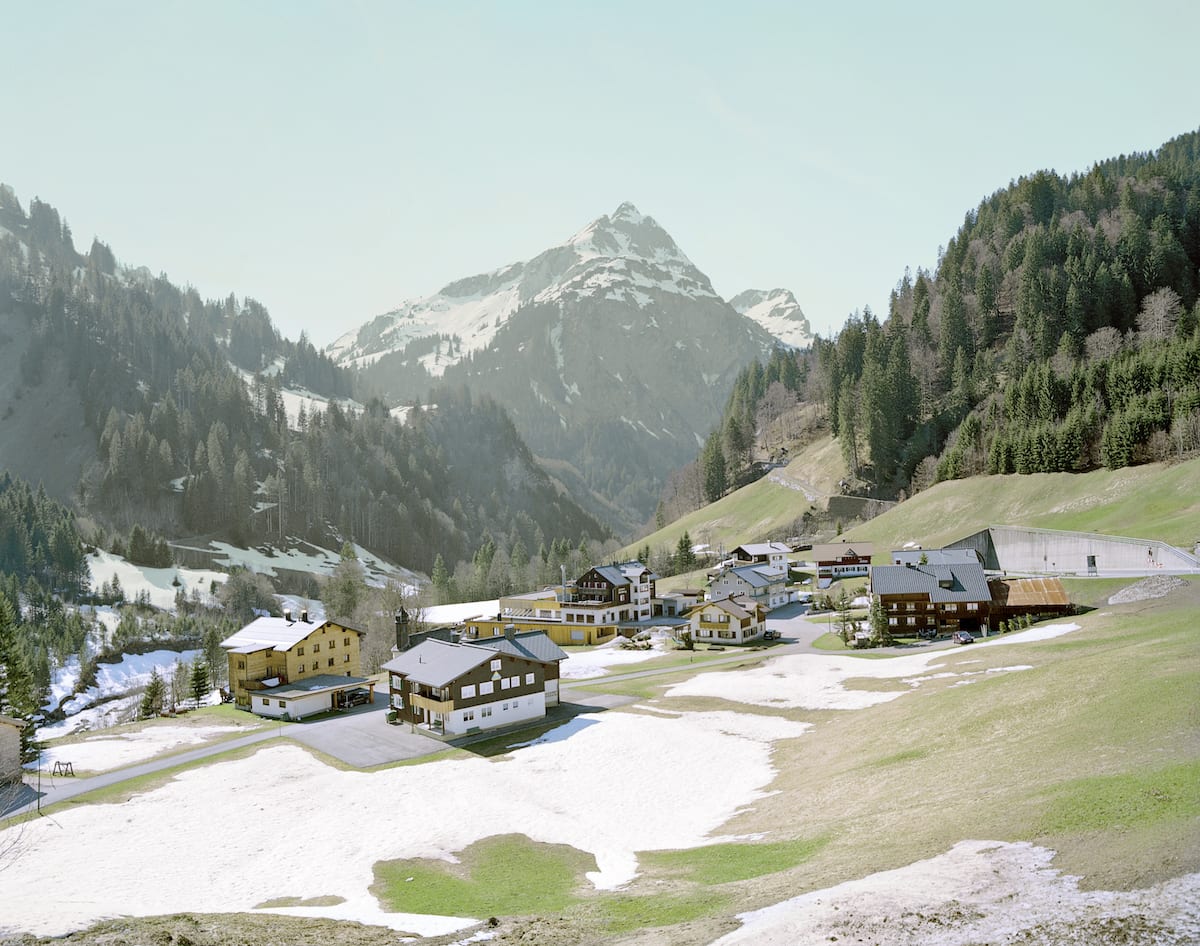
Whether it is a quaint church framed by snow-flecked trees or a road weaving its way up the mountain-side, Hyland repeatedly stops to photograph scenes where nature and humanity intersect. In the same vein as the image of a village set against scraggy peaks, these architectural details in the progressively wilder landscape symbolise humanity’s attempts to tame and transform it.
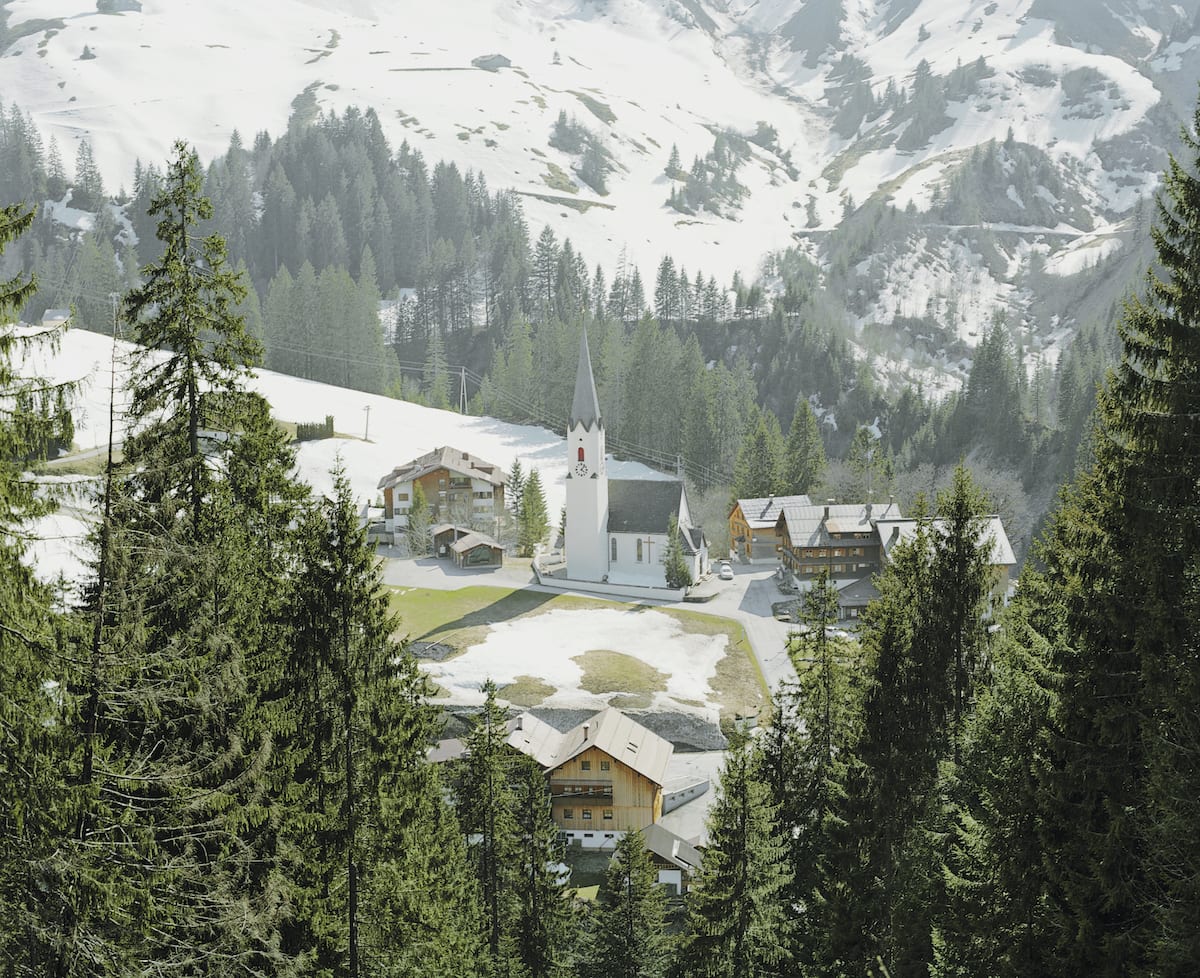
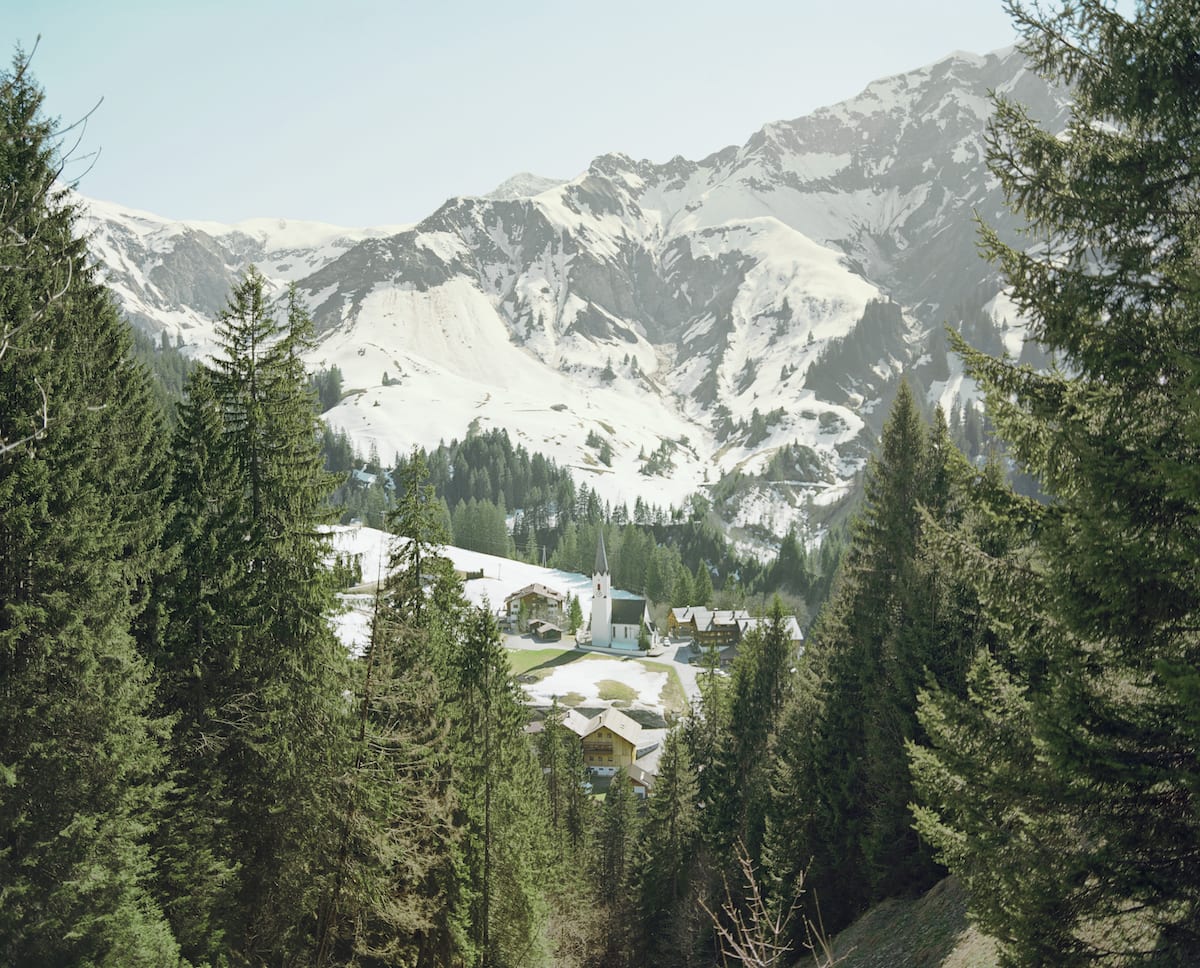
“I never want to take pictures that are what people expect,” says Hyland. “The whole point of a good picture is that it should be ambiguous in order to make people ask questions about it.” A Royal College of Art graduate, the photographer’s work has evolved into what some might class as landscape photography. Her images are unique for framing natural beauty in a manner that encourages viewers to look beyond their surface. “The second something is not ambiguous, that is when you’re taking a cliche of a picture,” she continues. “There’s a million cliches in the world, so if you are just adding to that, you’re not really doing anything that’s creatively different.”
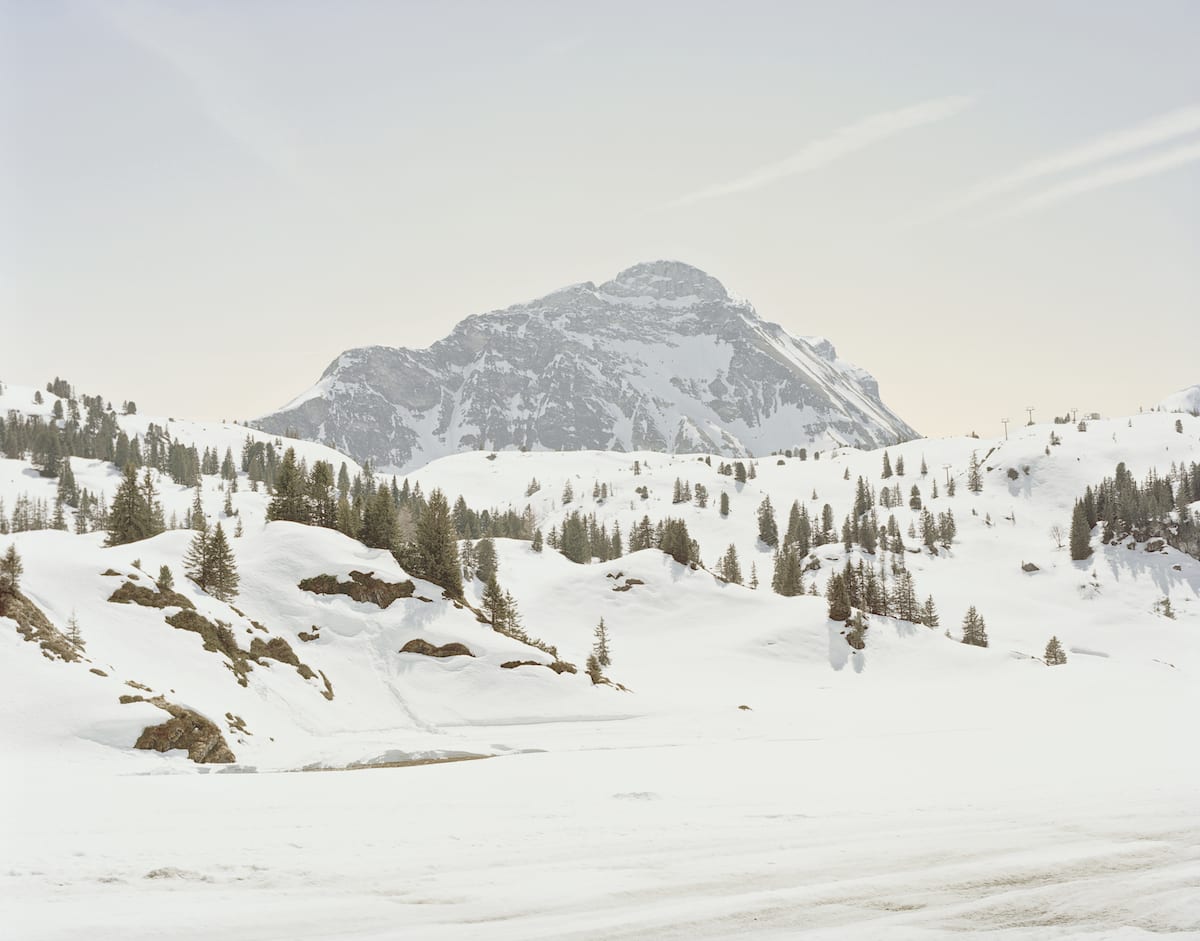
Back in the Bregenzerwald Valley, Hyland is once again drawn to uncanny details representative of society’s interventions in the environment. The area is known for its distinctive blend of modern and traditional architecture. This is epitomised in Krumbach, one of the region’s 22 villages, where seven international architecture firms were given free reign to each design a bus shelter. Today, these modernist creations sit alongside the settlement’s traditionally designed houses. For Hyland, however, like on the road to Warth, it is the “contrast between this architecture and the surrounding scenery” that most intrigues her.
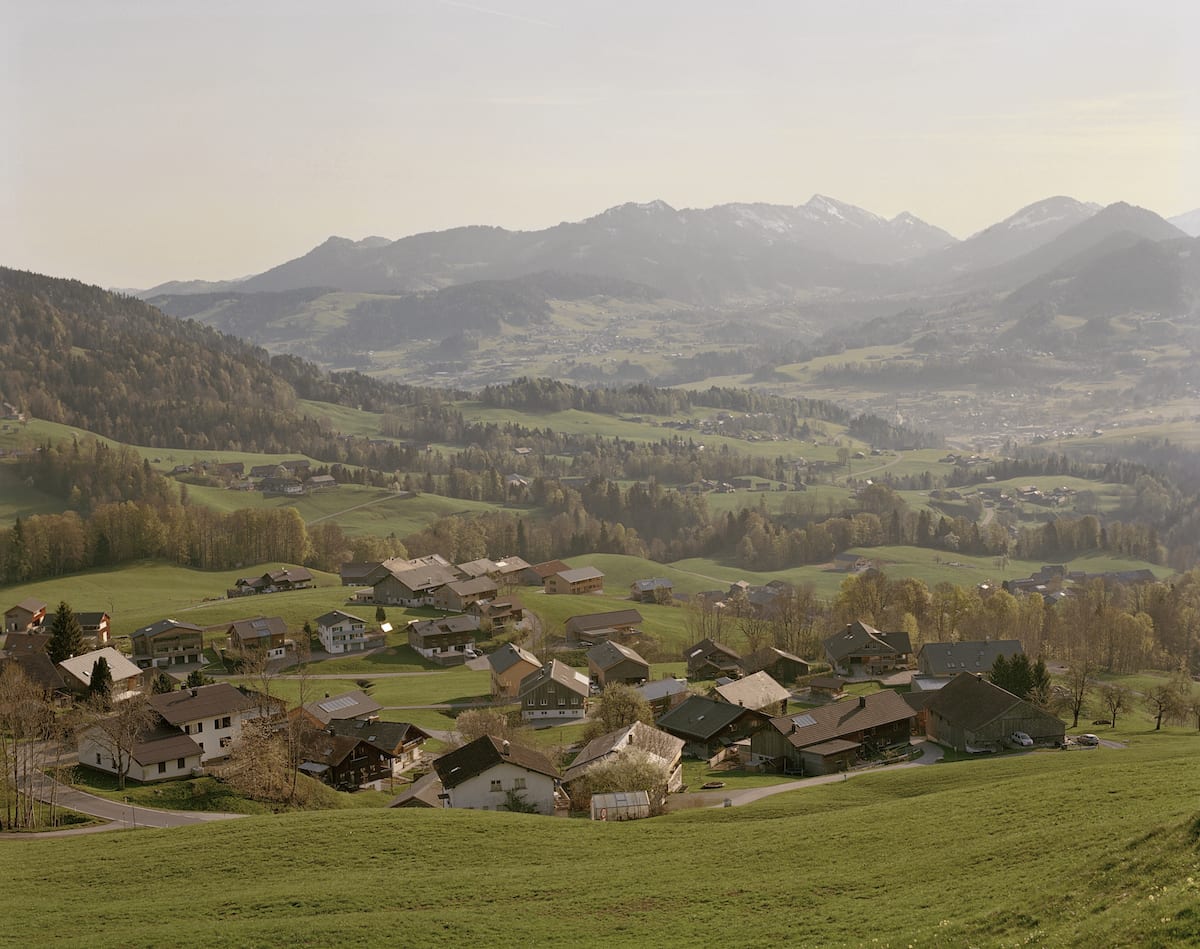
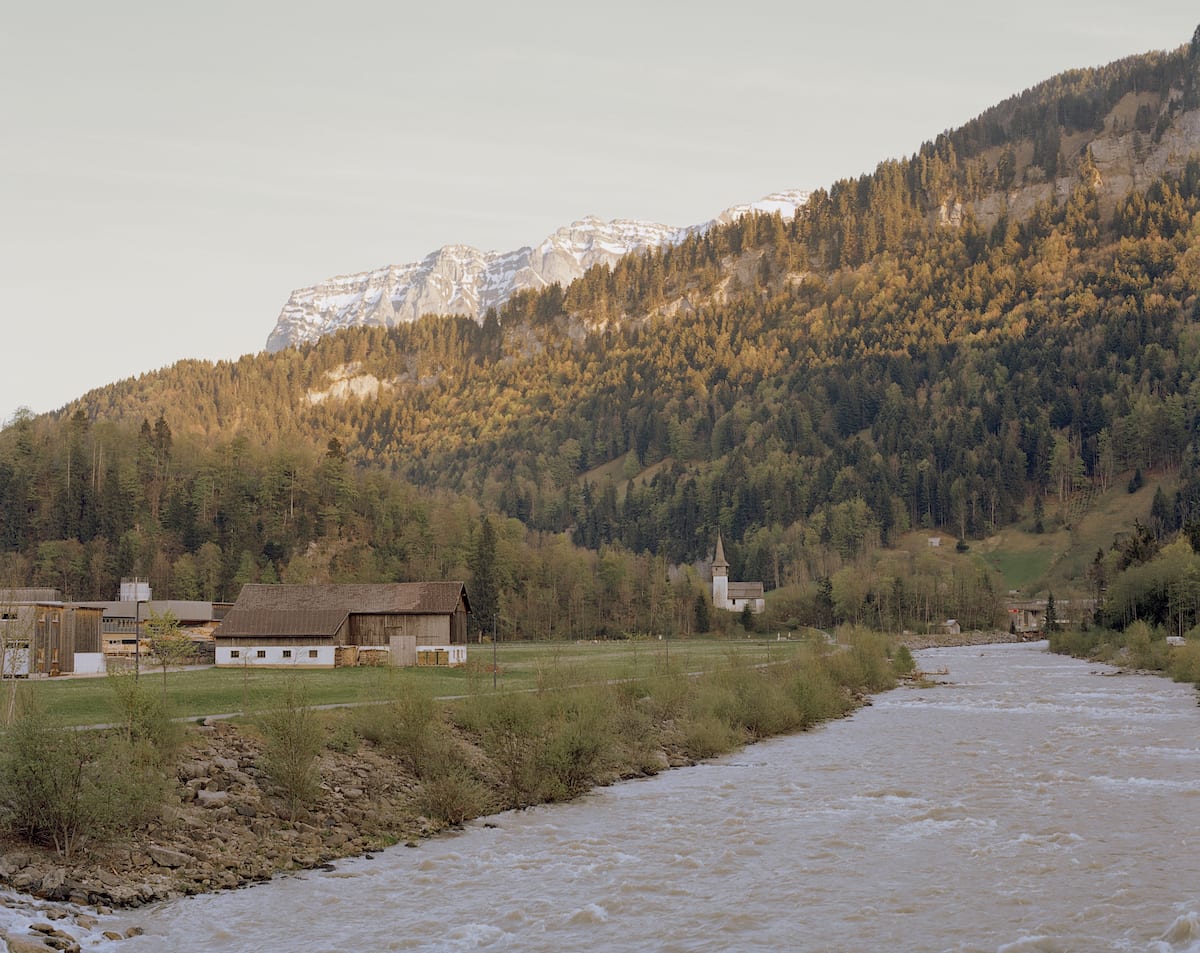
On our third day in the Bregenzerwald, Hyland’s lens shifts away from the landscape and refocuses on the people within it. Where her images of the environment hone in on humanity’s attempts to control it, the individuals she decides to photograph are seeking an experience of nature divorced from society’s control. “That is why they’re going up there,” she says “because they want to be immersed in this big vast landscape.” As we scramble up a snowy path, leaving the Baumgarten mountain station behind us, ‘they’ materialise on the horizon. The faint outlines of dozens of paragliders drift above; myriad multi-coloured specks punctuating the crisp blue sky.
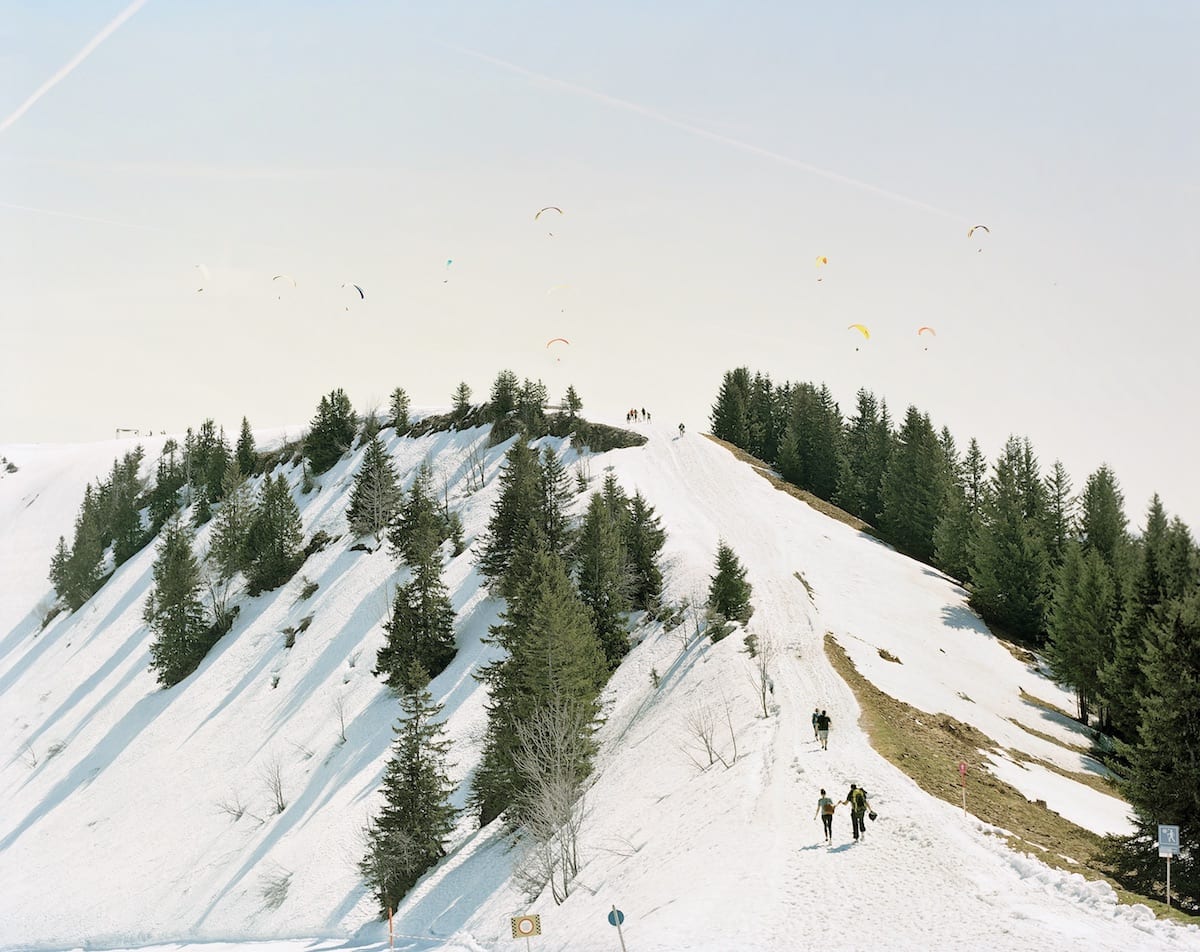
“A big part of my work is based on notions of the sublime,” explains Hyland. “If you just accept being vulnerable and powerless, then it can be empowering to be in these huge vistas and experience the world in its natural state.” This is a sentiment echoed by the paragliders we encounter on a rocky outcrop. Located at the border of Germany, Austria and Switzerland, the ridge is one of the best flying areas in Europe and draws locals and visitors year-round.
“It is unbelievable to be in the air alone,” says Mario, an acrobatic pilot who has been paragliding for five years. Franz, the head of a social organisation, who we meet further along the ridge, uses the sport as a momentary respite from the pressures of his working life. “I started at the very beginning when paragliding was first gaining popularity,” he says. “When you are up in the air, you stop thinking so much.” Winfried, who has come to celebrate his birthday, shares a similar view: “Paragliding gives you a sense of freedom. It feels like you are a bird.”
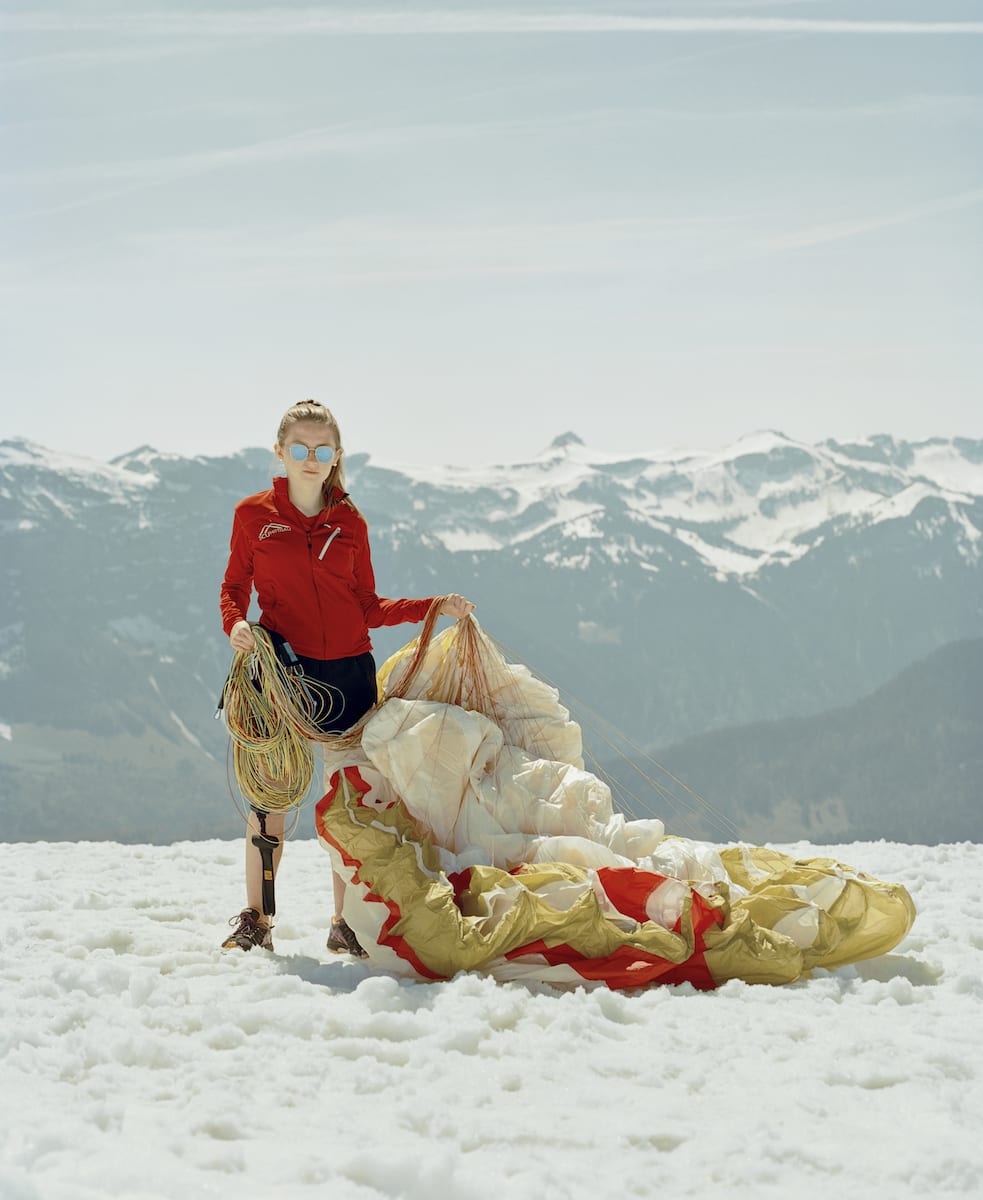
Leaving the droves of paragliders behind, we take the Bezeau cable car back to the valley floor. “I try and photograph things that aren’t conventionally beautiful, which is why I was initially struggling a bit in the Bregenzerwald as it is so picturesque,” reflects Hyland. “That’s why I wanted to hunt for things that were a bit more unusual.” Her resulting images succeed at drawing out details and contrasts that encourage us to consider the complex relationship between humanity and nature ingrained in these resplendent vistas.
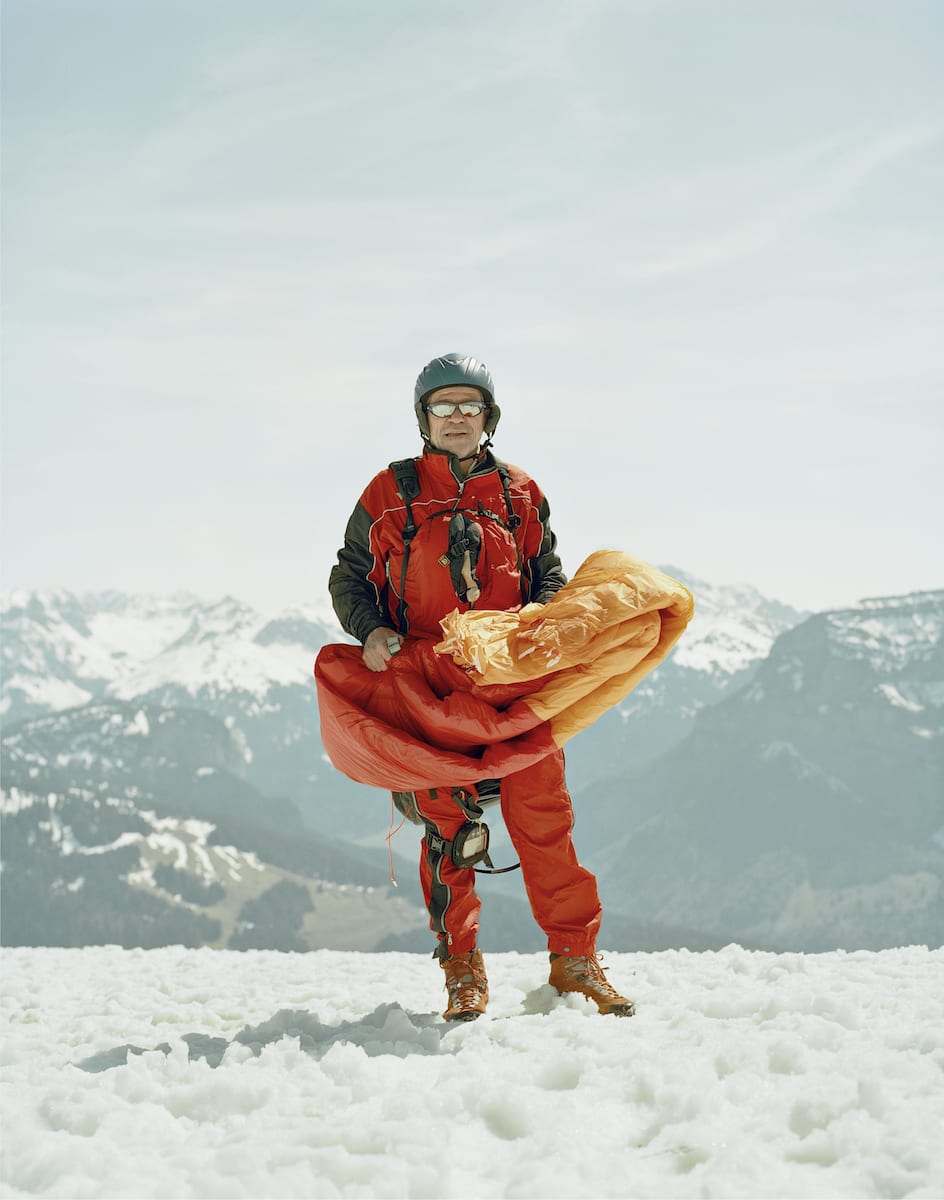
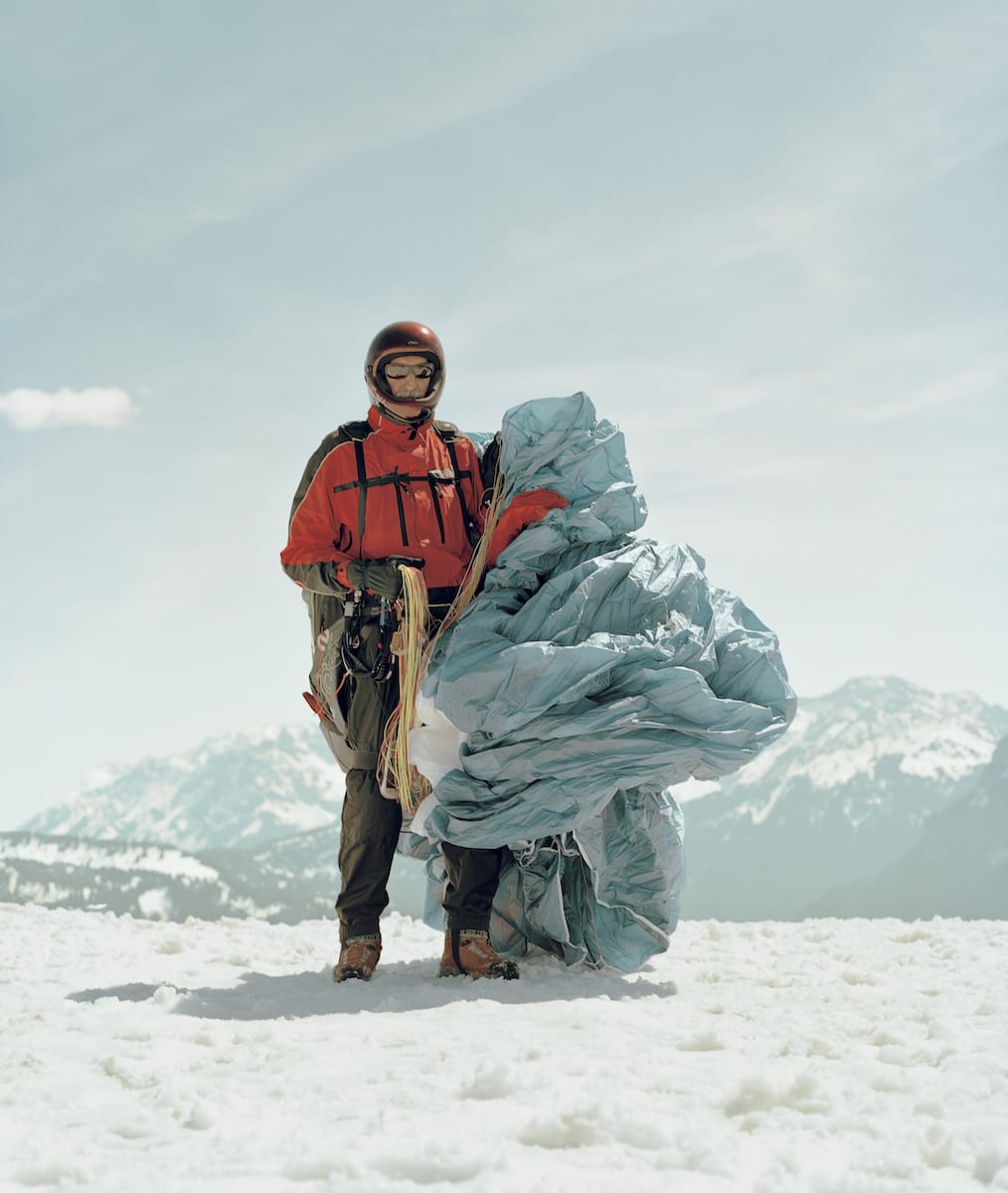
The following day we depart from the rural Bregenzerwald, driving five hours to the city of Linz: a former European Capital of Culture that straddles the Danube River. Here Hyland is keen to focus on the city’s inhabitants to create a series of portraits performative in nature. Read about the next leg of her journey here.
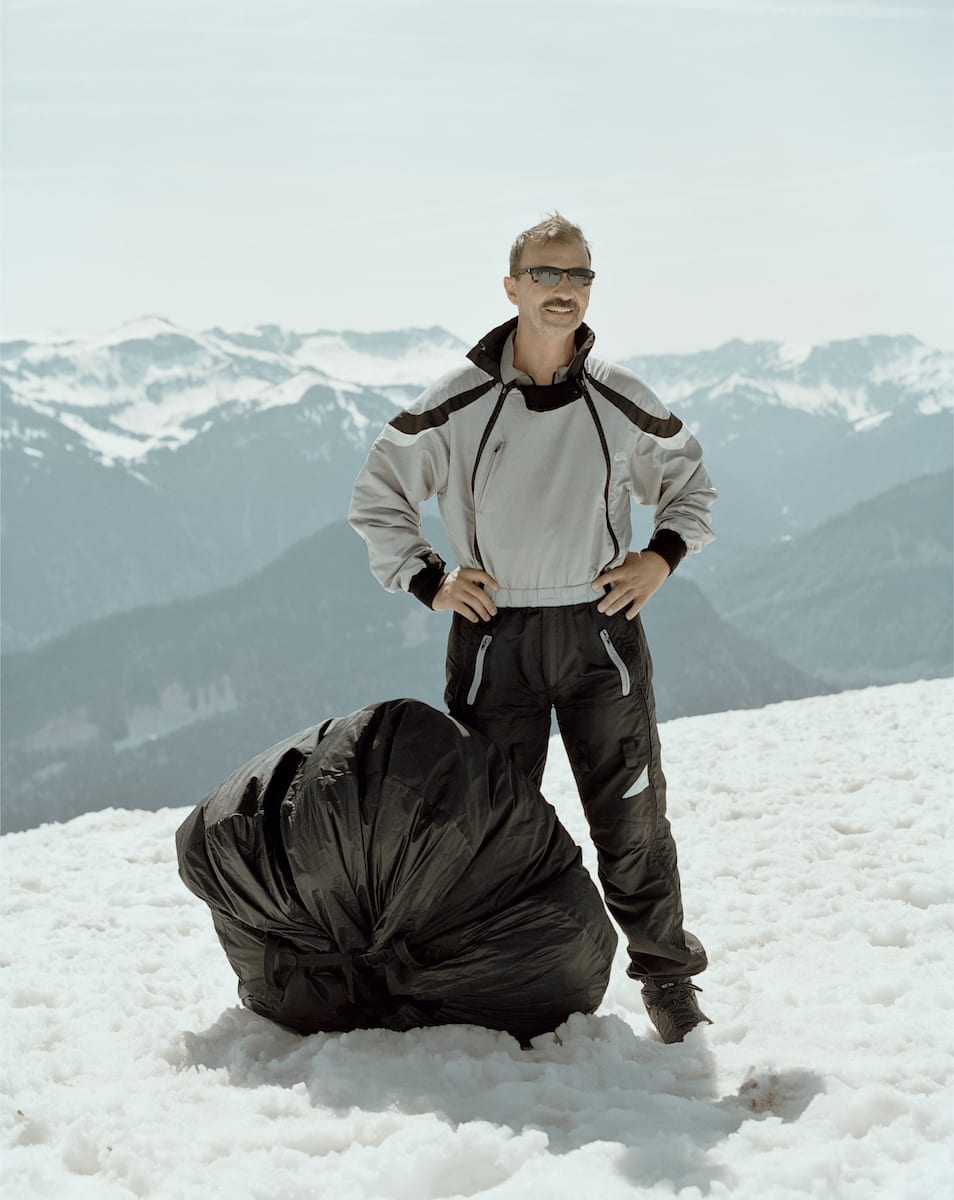
–
Austria. The Art of Discovery is a Studio 1854 commission made possible with the generous support of the Austrian National Tourist Office. Please click here for more information on sponsored content funding at British Journal of Photography.

